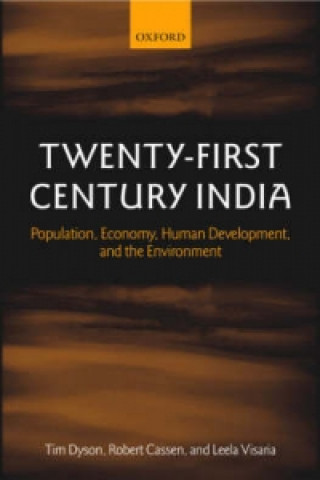
Code: 04529982
Twenty-First Century India
by Dyson, Tim (Professor of Population and Development, London School of Economics & Political Science), Cassen, Robert (Visiting Professor, Department of Social Policy, London School of Economics & Polit
Twenty-First Century India is the first study of India's development giving a fully integrated account of population and development. It is built on new projections of the population for fifty years from the Census of 2001. India' ... more
- Language:
 English
English - Binding: Hardback
- Number of pages: 436
Publisher: Oxford University Press, 2004
- More about this

You might also like
Give this book as a present today
- Order book and choose Gift Order.
- We will send you book gift voucher at once. You can give it out to anyone.
- Book will be send to donee, nothing more to care about.
More about Twenty-First Century India
You get 287 loyalty points
 Book synopsis
Book synopsis
Twenty-First Century India is the first study of India's development giving a fully integrated account of population and development. It is built on new projections of the population for fifty years from the Census of 2001. India's population then had already passed 1 billion. Twenty-five years later it will exceed 1.4 billion, and will almost certainly pass 1.5 billion by mid-century. The projections incorporate for the first time both inter-state migration and the role of HIV/AIDS. They also show India's urban future, with close to half a billion urban inhabitants by the year 2026. The implications of this population growth are then traced out in a range of modelling and analytical work. Growing numbers are found to complicate the task of achieving widespread education in a number of India's states, while other states are already experiencing declines in their school-age population. Demographic growth also contributes to poverty, and increasing divergence in social conditions among the states. As population growth slows in the country overall, the labour force continues to grow relatively fast, with difficult consequences for employment.But national economic growth could be accelerated by the 'demographic bonus' of the declining proportion of dependents to workers in the population. The book is reasonably optimistic about India's food prospects: the country can continue to feed itself. It can also enjoy higher levels of energy use, manufacturing, and modern forms of transport, while experiencing less chemical pollution. India's cities can become cleaner and healthier places to live. Perhaps the most difficult environmental issue, and the one most strongly related to population growth, is water. Some states also face severe pressures on common property resources. A policy chapter concludes the book. India's future problems are large, but in principle manageable. However, whether the country will actually achieve sustainable development for all is another matter.
 Book details
Book details
Book category Books in English Society & social sciences Sociology & anthropology Sociology
114.15 €
- Full title: Twenty-First Century India
- Subtitle: Population, Economy, Human Development, and the Environment
- Author: Dyson, Tim (Professor of Population and Development, London School of Economics & Political Science), Cassen, Robert (Visiting Professor, Department of Social Policy, London School of Economics & Polit
- Language:
 English
English - Binding: Hardback
- Number of pages: 436
- EAN: 9780199243358
- ISBN: 0199243352
- ID: 04529982
- Publisher: Oxford University Press
- Weight: 806 g
- Dimensions: 242 × 163 × 23 mm
- Date of publishing: 25. March 2004
Trending among others
-

Bushido the Soul of Japan
11.48 € -

Small Is Beautiful
11.07 € -22 % -

Death and the Afterlife
18.03 € -24 % -

Outsiders
17.02 € -15 % -

Death and the Afterlife
38.58 € -

Edge of Surrealism
35.96 € -9 % -

Fair Play Deck
17.62 € -19 % -

Eroticism
11.27 € -28 % -

Sex at Dawn
13.59 € -18 % -
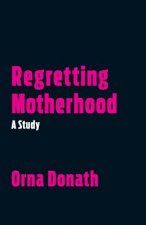
Regretting Motherhood
15.71 € -8 % -

Surrendered Wife
10.37 € -27 % -

Cartoon Guide to Statistics
19.54 € -21 % -

Gifts of Imperfection: 10th Anniversary Edition
28.71 € -

Intercourse
14.30 € -27 % -
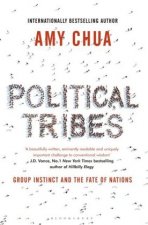
Political Tribes
11.27 € -21 % -

Wounded Woman
18.63 € -10 % -

Intimate Communion
12.79 € -25 % -
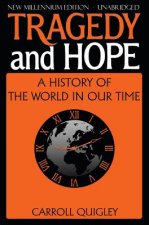
Tragedy and Hope
71.12 € -

Critique of Everyday Life
36.67 € -19 % -

True Believer
12.79 € -29 % -

On Death and Dying
14 € -30 % -

Past Mortems
9.26 € -28 % -

Building and Dwelling
13.49 € -29 % -

Surrendered Single
13.29 € -28 % -

Expulsion of the Other - Society, Perception and Communication Today
17.02 € -

Together
11.38 € -22 % -

Modern Psychometrics with R
72.74 € -12 % -

Cultural Contradictions Of Capitalism
16.61 € -21 % -

Unthinking Social Science
28.60 € -15 % -

History and Social Theory 2e
23.47 € -7 % -

Transparency Society
14.10 € -6 % -
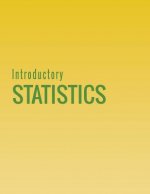
Introductory Statistics
38.58 € -

Single Mothers by Choice
13.79 € -19 % -

Age of Beloveds
35.96 € -9 % -

Practice of Business and Social Research
38.18 € -

Revolt Of The Cochroach People
14.50 € -19 % -

Healing Children's Grief
66.19 € -

Why People Die by Suicide
25.78 € -16 % -

Work of the Dead
25.68 € -16 % -

Tragedy and Hope
44.52 € -

Braving the Wilderness
8.65 € -20 % -

Wanderlust
17.02 € -19 % -

Theory of the Leisure Class
11.27 € -28 % -

Cruel Optimism
27.40 € -6 % -

Social Intelligence
12.89 € -22 % -

World of Sex
6.24 € -28 % -

Book of Tea
9.26 € -28 % -

Why Love Hurts - A Sociological Explanation
17.62 € -

Becoming Partners
15 €
Collection points Bratislava a 2642 dalších
Copyright ©2008-24 najlacnejsie-knihy.sk All rights reservedPrivacyCookies






 15549 collection points
15549 collection points Delivery 2.99 €
Delivery 2.99 € 02/210 210 99 (8-15.30h)
02/210 210 99 (8-15.30h)